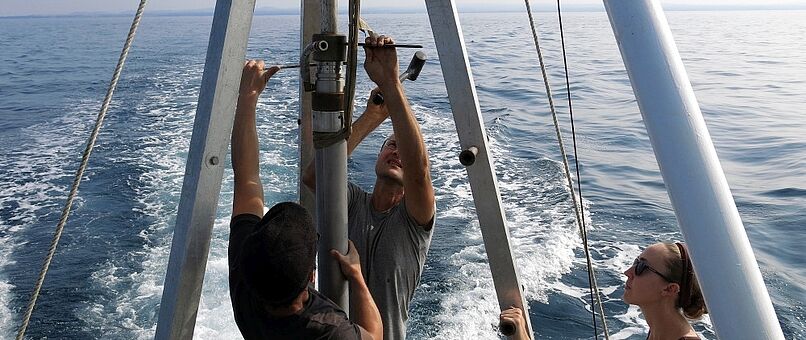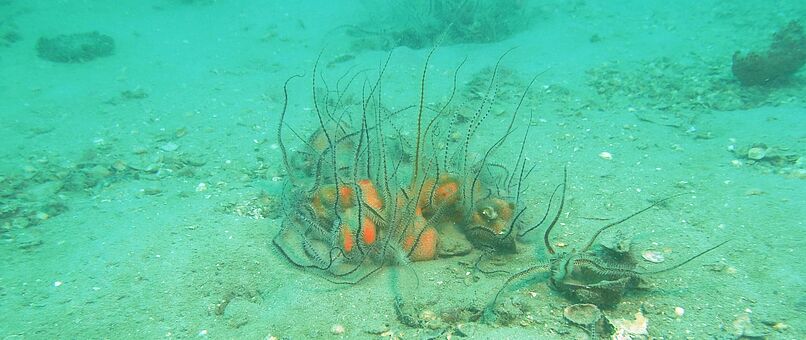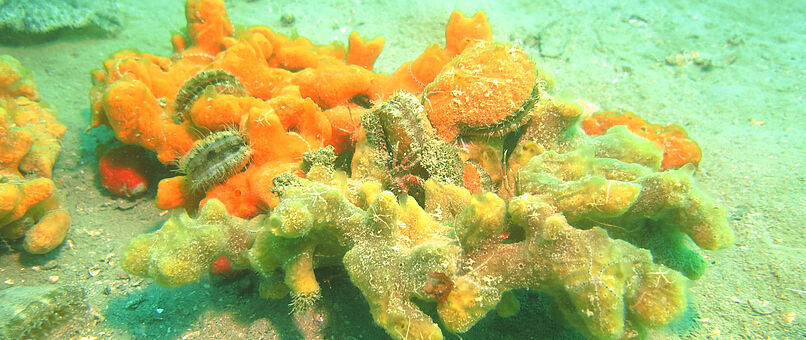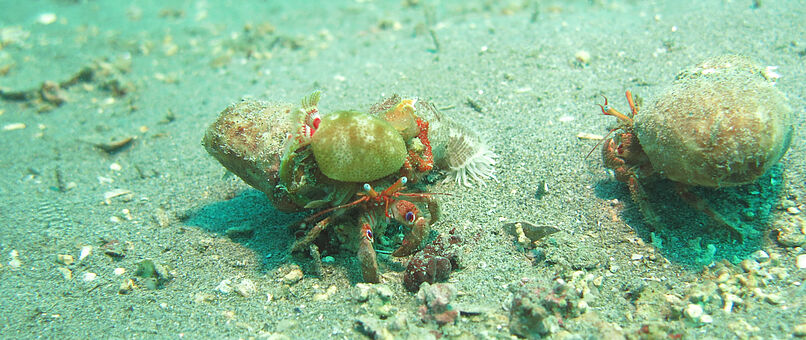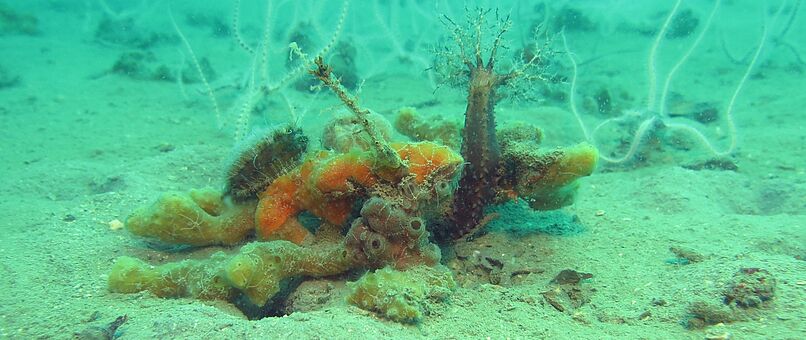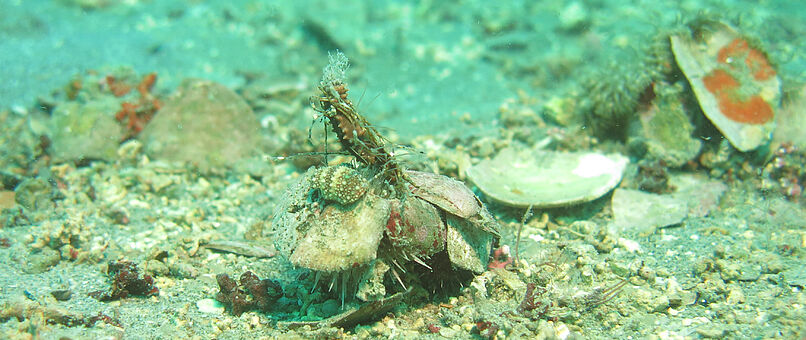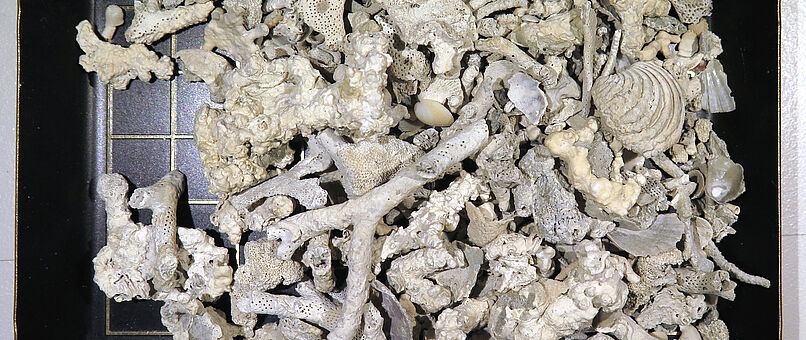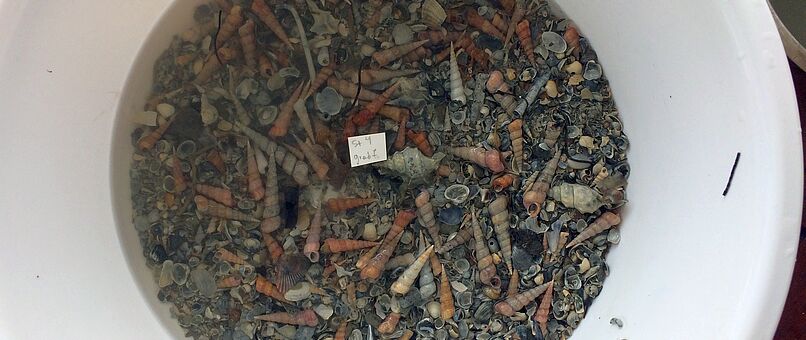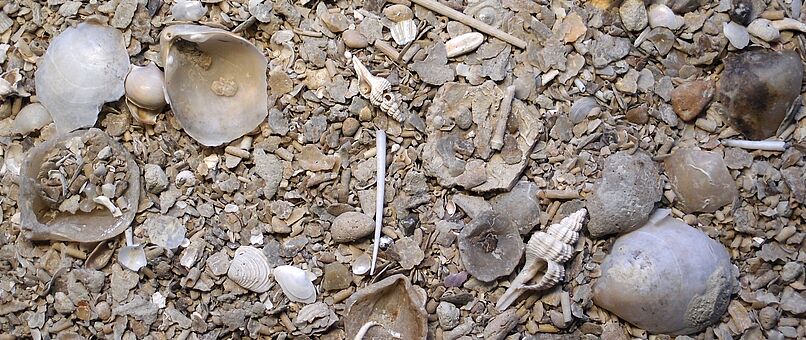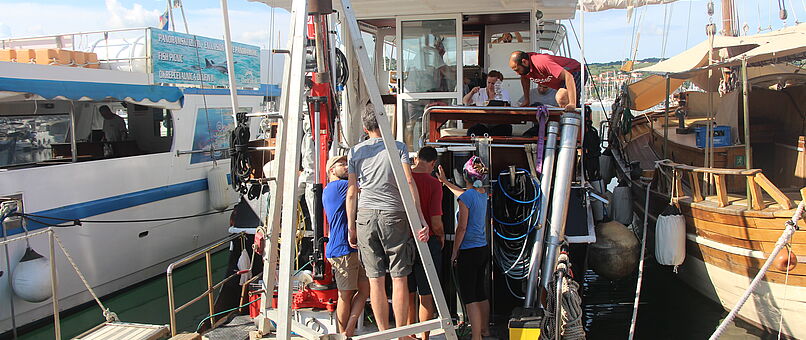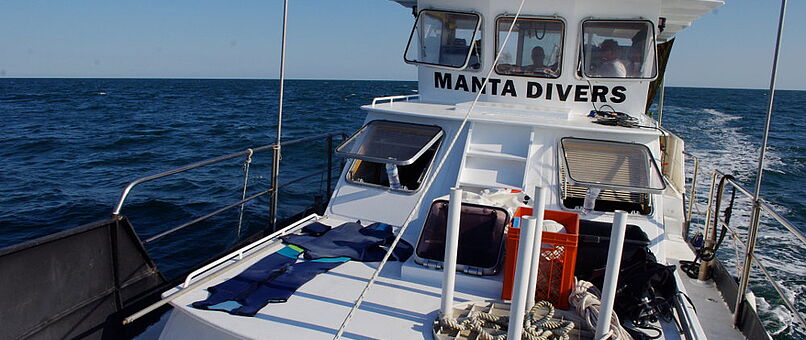Linking the past to the present
Modern marine ecological studies investigating ecosystem responses to natural or anthropogenic environmental changes are normally restricted to annual or decadal time scales. Consequently, quantitative biological monitoring data are not available for earlier, pre-impact periods. However, in many regions of the word humans have been altering ecosystems for centuries.
The Adriatic Sea ranks among the most degraded marine ecosystems worldwide and has a long history of intense human impact that began in Roman times and culminated in strong eutrophication, pollution and heavy fishing pressure in recent decades. In this project, we use conservation palaeobiology and historical ecology approaches to reconstruct historical baselines states of marine populations and communities based on the youngest fossil record of the Adriatic Sea.
Main goals
- Identifying the composition of pre-impact benthic communities
- Dating the timing of ecological turnovers and test the impact of regional-scale nutrient increase and intense fishing on benthic community structure and on predation intensity.
- Reconstructing the original distribution patterns of the high biomass epifauna characteristic for the northern Adriatic in pre-industrial times.
- Identifying regions that might serve as a reference for restoration and conservation efforts
Sampling
We collect data on both living marine organisms and their dead remains preserved in sediments, such as mollusc shells, echionoid tests and fish otoliths (“earstones”), using:
- sediment cores acquired from an oceanographic vessel
- samples of surface sediments taken by van Veen grab and SCUBA diving
Watch the videos from our fieldwork:
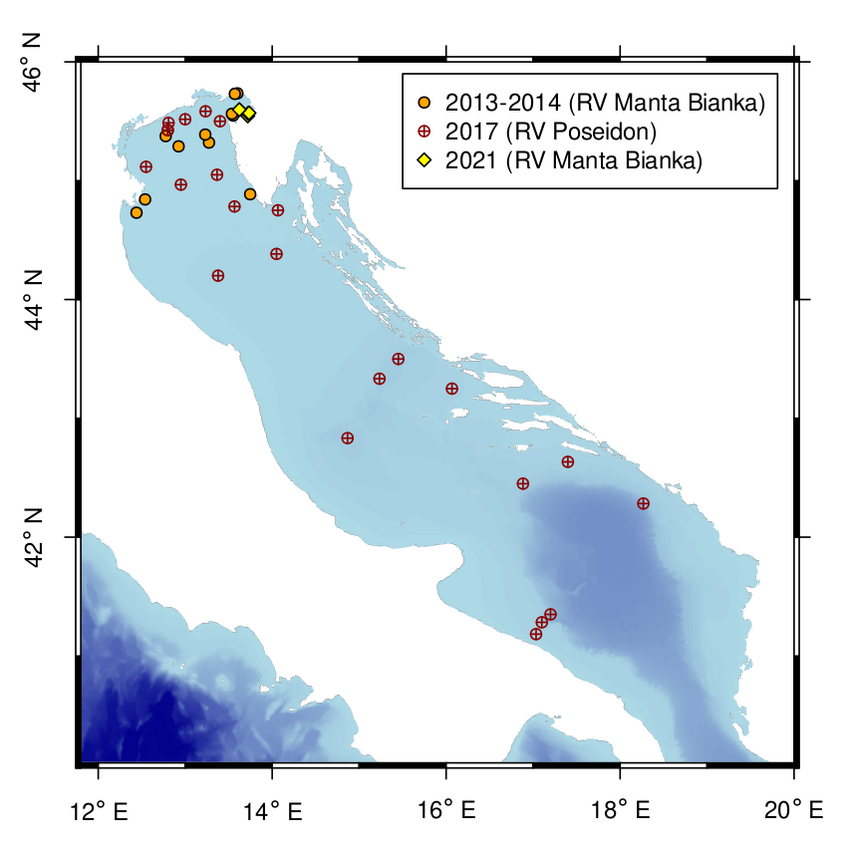
Map of the stations sampled on board of the research vessels Manta Bianka and Poseidon during different stages of the project
Analyses
- Reconstructing environmental conditions based on sediment parameters and paleoecological data
- Establishing chronology of ecological shifts using radiocarbon and amino-acid-racemisation dating of shells and other remains of marine organisms, as well as 210Pb dating of sediments
- Tracking long-term changes of benthic communities based on fossil assemblages in sediment cores and by comparing living biota to death assemblages (accumulations of skeletal remain in surface sediments).

UWITEC piston corer used to collect sediment cores offshore.
© Martin Zuschin
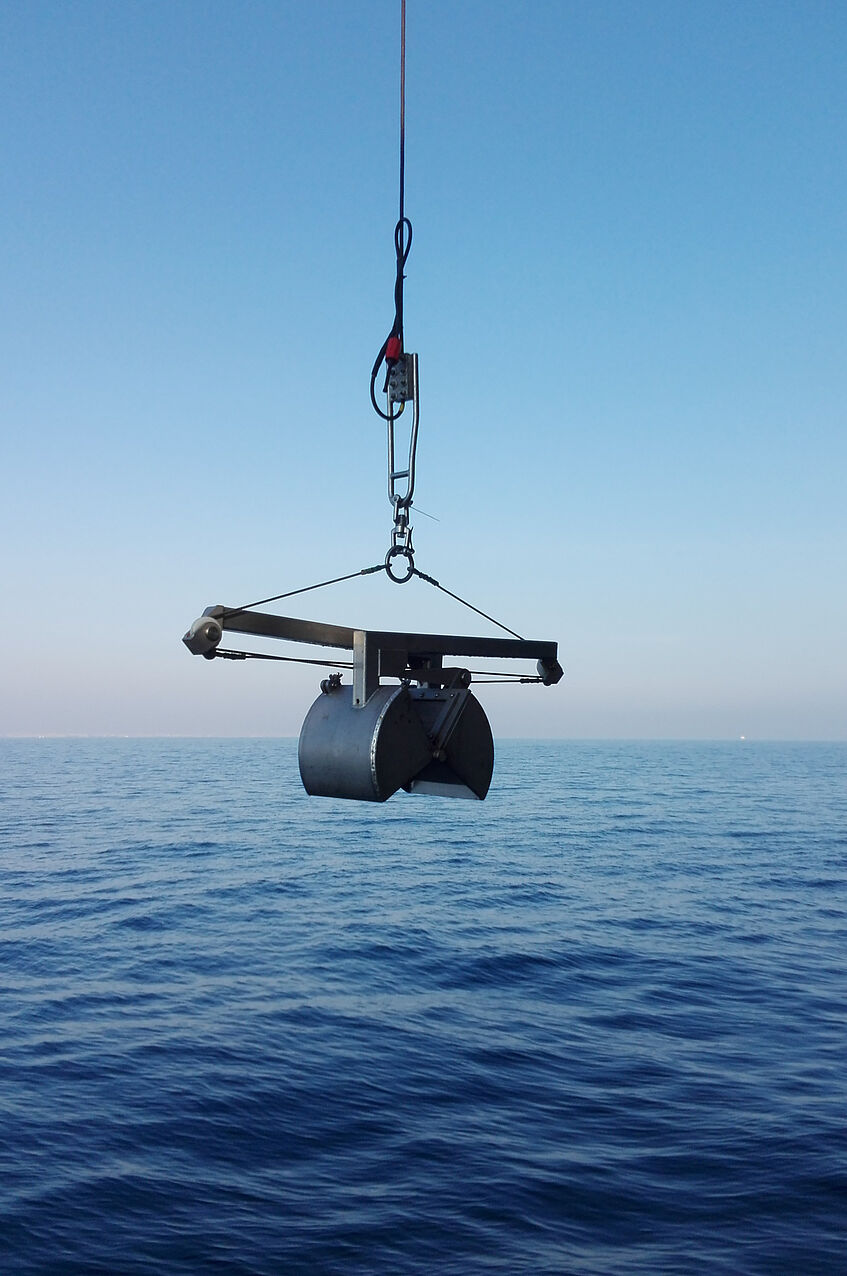
Van Veen grab sampler on board of RV Poseidon.
© Martin Zuschin
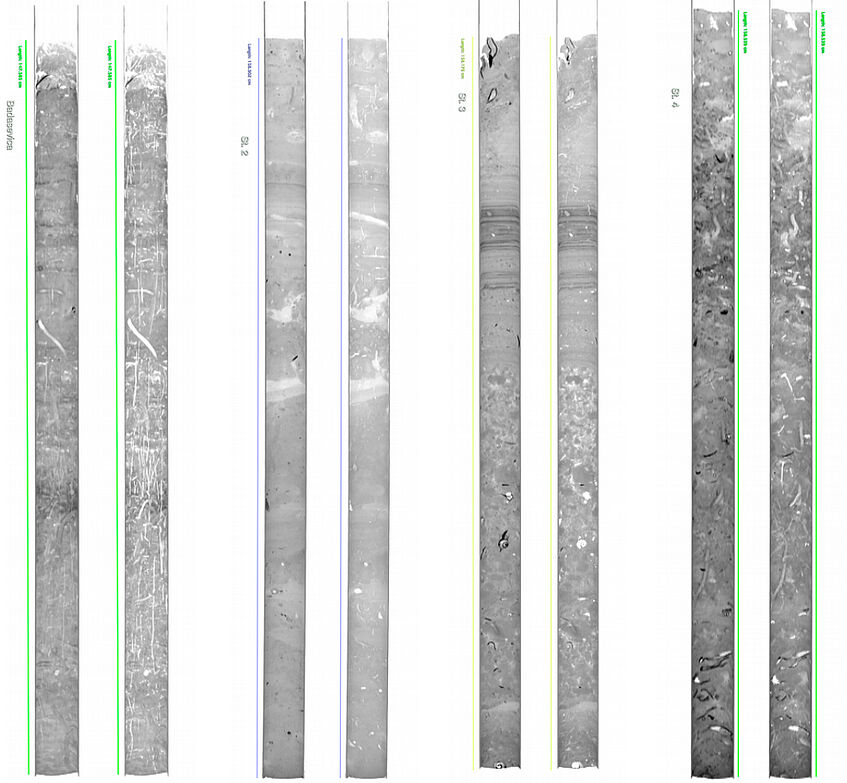
X-ray CT scans of 1.5-m-long cores from the Koper Bay, Slovenia. Traces of seagrass rhizomes, lamination and burrows are well visible. © Daniele Cassin and Roberto Zonta
3D CT scan of a 1.5-m-long core collected off the Po Delta, Italy at 21 m water depth
Mollusc shells, coarser-grained layers (corresponding to major flood events) and traces of burrowing echinoids are visible as areas of higher density marked in warmer colours. © Daniele Cassin and Roberto Zonta



